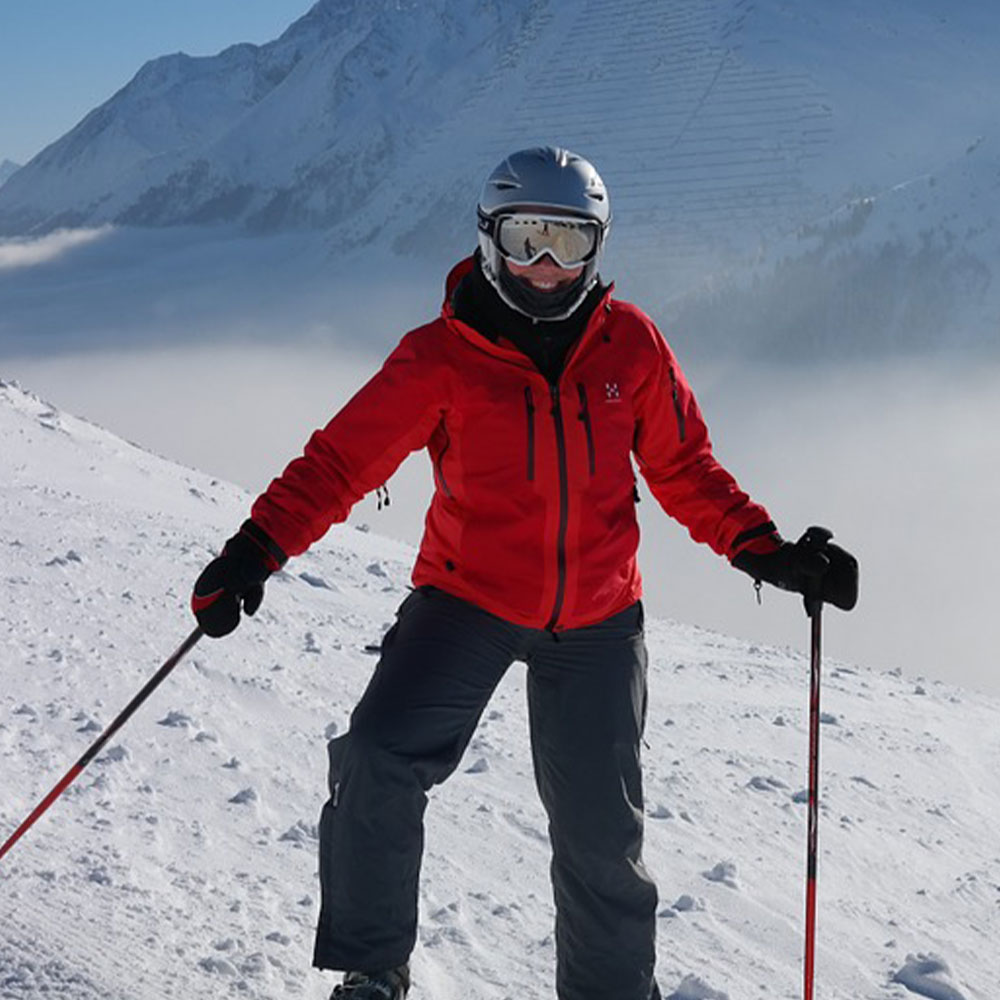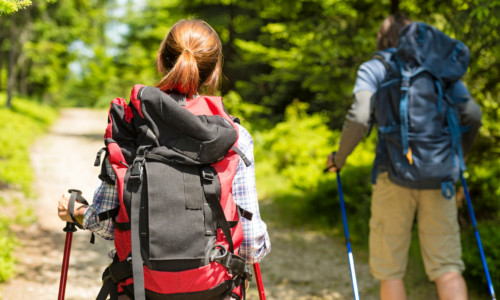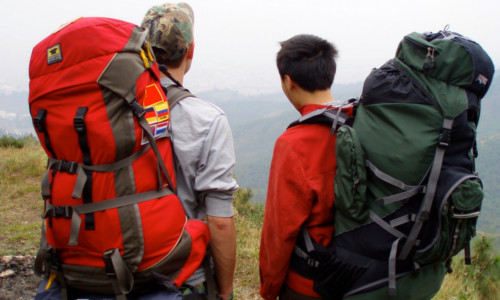Wear Your Backpack Right for a Comfortable Hike
Author

A keen runner, skier and nuts about cycling. Karl lives in Cumbria, where he loves encouraging his two children to follow in his outdoor lifestyle. Whilst out and about keeping active, Karl keeps a diary and shares it with Outdoor Look.
 Since my induction into the backpacking world at the behest of my legendary cousin Rodney, my skillset as a hiker has reached new, previously unthinkable heights. I am lauded for my tent making abilities, my culinary expertise has a number of fans, and everyone who has been with me on a hike swears by my bat-like navigational abilities. One skill that I was oblivious to for a long time was the art of adjusting a backpack. When I met Rodney again last year in the summer during a group hike, he immediately objected to the way I was carrying my backpack. He laughed at my blatant incompetence and pointed out that my backpack was fitted all wrong. This experience was quite excruciating and brought me down to earth from my peer-fuelled apotheosis.
Since my induction into the backpacking world at the behest of my legendary cousin Rodney, my skillset as a hiker has reached new, previously unthinkable heights. I am lauded for my tent making abilities, my culinary expertise has a number of fans, and everyone who has been with me on a hike swears by my bat-like navigational abilities. One skill that I was oblivious to for a long time was the art of adjusting a backpack. When I met Rodney again last year in the summer during a group hike, he immediately objected to the way I was carrying my backpack. He laughed at my blatant incompetence and pointed out that my backpack was fitted all wrong. This experience was quite excruciating and brought me down to earth from my peer-fuelled apotheosis.
Choosing a Backpack
There are many considerations that you have to analyse before making a choice. Three main facets that should be looked at before buying a backpack are listed below:
Backpack capacity: The capacity should directly correlate with the length of your trip. The longer the trip, the higher your backpack capacity should be. Depending on the weight and volume you are carrying, your backpack capacity should vary. A shorter trip of 1-3 days, you should carry backpack in the range of 30-50 litres. A trip of close to 5 nights requires you to carry a backpack with a volume between 50-80 litres. Anything above that and you really need to buy the biggest backpack that you can get your hands on.
Backpack features: A backpack comes with many features and you need to find the one that meets all your requirements.
Backpack fit: Always consider your torso length and not your height before making a selection.
Adjusting a Backpack for a Comfortable Experience
 Even if you have bought the best backpack, you still need to know how you can adjust it right for the perfect fit. Below is a step-by-step guide that you can follow to make adjustments in your backpack:
Even if you have bought the best backpack, you still need to know how you can adjust it right for the perfect fit. Below is a step-by-step guide that you can follow to make adjustments in your backpack:
1. Put some weight into the backpack. This will allow you to get a good feel of how it will fit after it is packed. Now, loosen all of the straps and put it on.
2. Now, you simply must tighten the hip belt. For doing this, make the padded hip belts cover the top of your hip bones. Tighten the straps until they are nicely attached but are not too tight.
3. Pull the straps straight down and tighten the shoulder straps. Make sure that you are not pulling it too tight. You should always make sure your shoulders aren't carrying most of the weight.
4. The time has come: tighten the load lifter straps. The load lifters help in pulling the weight of your gear closer to your body. Pull the load lifters till the straps are at about a 45° angle to the backpack's body.
5. Now fasten and tighten the sternum strap. This relieves stress by pulling the shoulder straps together. Always, keep your sternum strap an inch below your collarbone.
6. Once it's all tight, you can loosen the shoulder straps a bit. Now, you should be able to feel the backpack ease onto your hips. In the perfect scenario, about 65% of the weight should ride on your hips.
By following the above mentioned tips, you should be able to carry your load with maximum efficiency. The perfect fit that you will get with the right adjustments will really help you a great deal while moving through the rugged terrain on the trails.
Author

A keen runner, skier and nuts about cycling. Karl lives in Cumbria, where he loves encouraging his two children to follow in his outdoor lifestyle. Whilst out and about keeping active, Karl keeps a diary and shares it with Outdoor Look.
Categories
- Sport (28)
- Product Reviews (3)
- Team Outdoor Look (7)
- Mike Wild (2)
- Mike Payton (2)
- Suse Hammond-Pears (3)
- Snowboarding (12)
- Latest Offers (105)
- Shop Talk (1)
- Competitions (7)
- Walking (413)
- Lifestyle Fashion (8)
- Travel (86)
- Kit Guides (176)
- Workwear Clothing (6)
- Safety Workwear (4)
- Health/Fitness (289)
- Skiing (91)
- Great Outdoors (1316)
- Cycling (92)
- January 2025
- December 2024
- November 2024
- October 2024
- September 2024
- August 2024
- July 2024
- June 2024
- May 2024
- April 2024
- March 2024
- February 2024
- January 2024
- December 2023
- November 2023
- October 2023
- September 2023
- August 2023
- July 2023
- June 2023
- May 2023
- April 2023
- March 2023
- February 2023
- January 2023
- December 2022
- November 2022
- October 2022
- September 2022
- August 2022
- July 2022
- June 2022
- May 2022
- April 2022
- March 2022
- February 2022
- January 2022
- December 2021
- November 2021
- October 2021
- September 2021
- August 2021
- July 2021
- June 2021
- May 2021
- April 2021
- March 2021
- February 2021
- January 2021
- December 2020
- November 2020
- October 2020
- September 2020
- August 2020
- July 2020
- June 2020
- May 2020
- April 2020
- March 2020
- February 2020
- January 2020
- December 2019
- November 2019
- October 2019
- September 2019
- August 2019
- July 2019
- June 2019
- May 2019
- April 2019
- March 2019
- February 2019
- January 2019
- December 2018
- November 2018
- October 2018
- September 2018
- August 2018
- July 2018
- June 2018
- May 2018
- April 2018
- March 2018
- February 2018
- January 2018
- December 2017
- November 2017
- October 2017
- September 2017
- August 2017
- July 2017
- June 2017
- May 2017
- April 2017
- March 2017
- February 2017
- January 2017
- December 2016
- November 2016
- October 2016
- September 2016
- August 2016
- July 2016
- June 2016
- May 2016
- April 2016
- March 2016
- February 2016
- January 2016
- December 2015
- November 2015
- October 2015
- September 2015
- August 2015
- July 2015
- June 2015
- May 2015
- April 2015
- March 2015
- February 2015
- January 2015
- December 2014
- November 2014
- October 2014
- September 2014
- August 2014
- July 2014
- June 2014
- May 2014
- April 2014
- March 2014
- February 2014
- January 2014
- December 2013
- November 2013
- October 2013
- September 2013
- August 2013
- July 2013
- June 2013
- May 2013
- April 2013
- March 2013
- February 2013
- January 2013
- December 2012
- November 2012
- October 2012
- September 2012
- August 2012
- July 2012
- June 2012
- May 2012
- April 2012
- March 2012
- February 2012
- January 2012
- December 2011
- November 2011
- October 2011
- September 2011
- August 2011
- May 2010
- April 2010
- March 2010
- February 2010
- January 2010
- November 2009
- October 2009
- September 2009
Submit a Comment